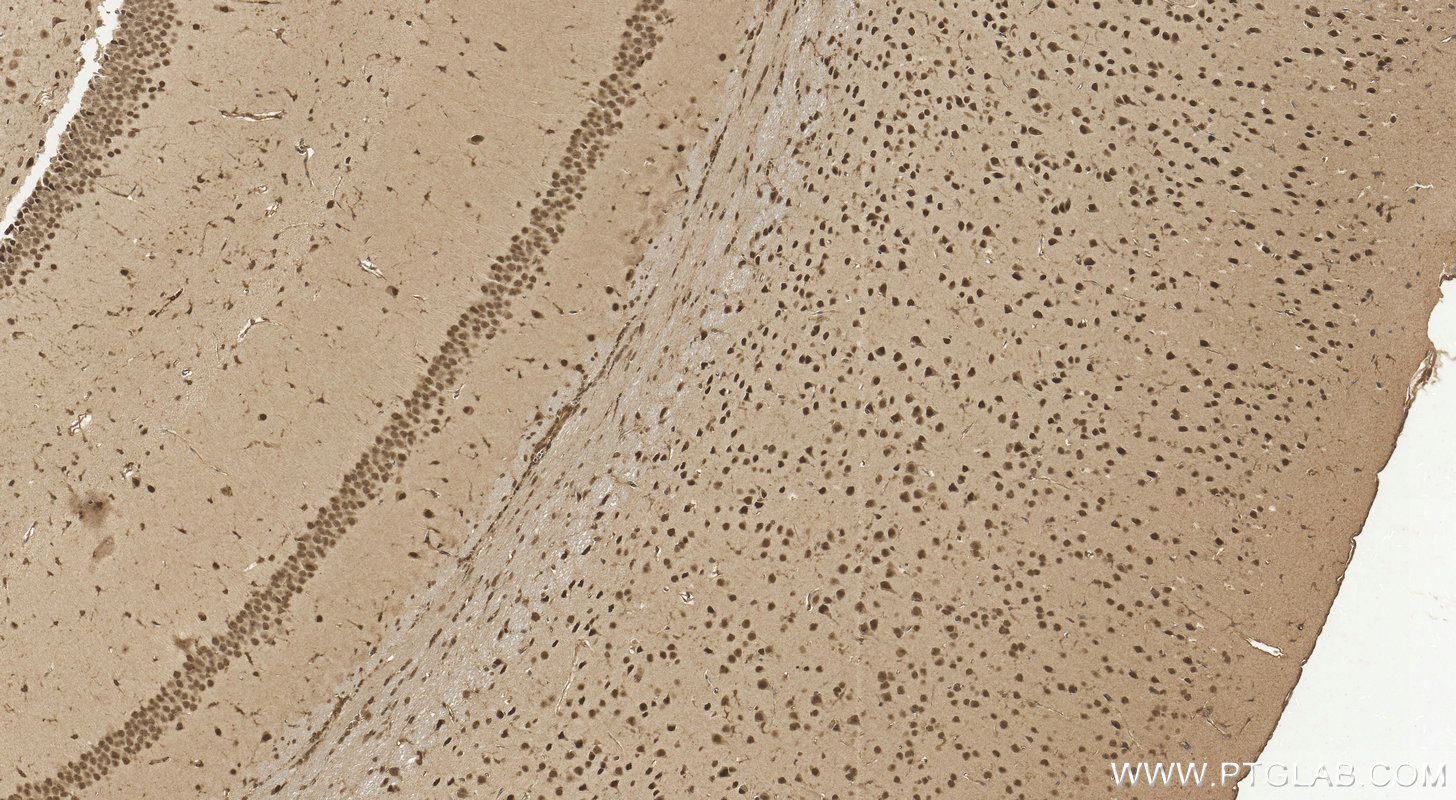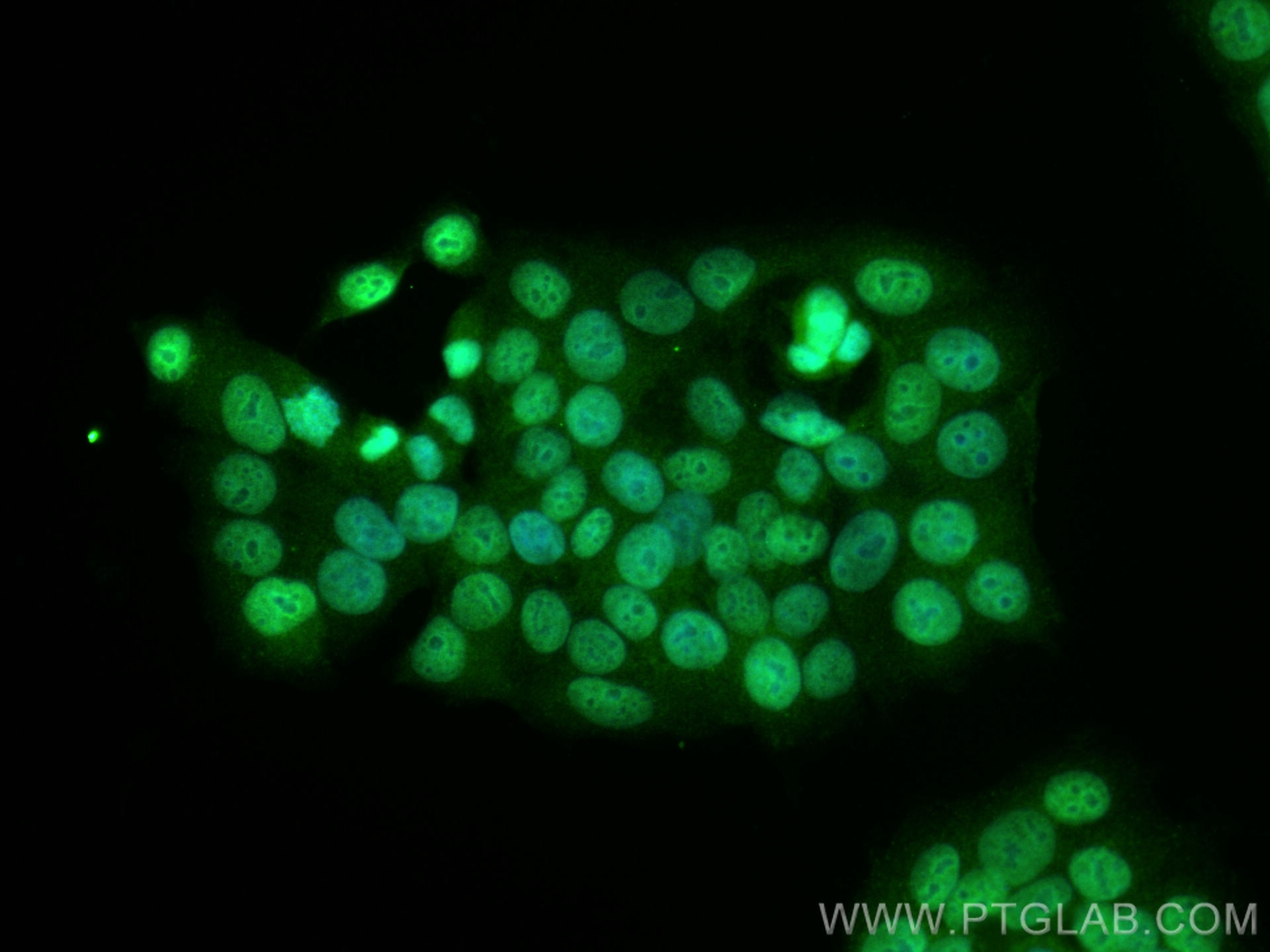- Phare
- Validé par KD/KO
Anticorps Polyclonal de lapin anti-NCOA4
NCOA4 Polyclonal Antibody for IHC, IF/ICC, ELISA
Hôte / Isotype
Lapin / IgG
Réactivité testée
Humain, souris et plus (1)
Applications
IHC, IF/ICC, ELISA
Conjugaison
Non conjugué
N° de cat : 10968-1-AP
Synonymes
Galerie de données de validation
Applications testées
| Résultats positifs en IHC | tissu cérébral de souris, il est suggéré de démasquer l'antigène avec un tampon de TE buffer pH 9.0; (*) À défaut, 'le démasquage de l'antigène peut être 'effectué avec un tampon citrate pH 6,0. |
| Résultats positifs en IF/ICC | cellules MCF-7, |
Dilution recommandée
| Application | Dilution |
|---|---|
| Immunohistochimie (IHC) | IHC : 1:400-1:1600 |
| Immunofluorescence (IF)/ICC | IF/ICC : 1:200-1:800 |
| It is recommended that this reagent should be titrated in each testing system to obtain optimal results. | |
| Sample-dependent, check data in validation data gallery | |
Applications publiées
| KD/KO | See 1 publications below |
| IHC | See 1 publications below |
| IF | See 2 publications below |
Informations sur le produit
10968-1-AP cible NCOA4 dans les applications de IHC, IF/ICC, ELISA et montre une réactivité avec des échantillons Humain, souris
| Réactivité | Humain, souris |
| Réactivité citée | rat, Humain, souris |
| Hôte / Isotype | Lapin / IgG |
| Clonalité | Polyclonal |
| Type | Anticorps |
| Immunogène | NCOA4 Protéine recombinante Ag1408 |
| Nom complet | nuclear receptor coactivator 4 |
| Masse moléculaire calculée | 70 kDa |
| Numéro d’acquisition GenBank | BC012736 |
| Symbole du gène | NCOA4 |
| Identification du gène (NCBI) | 8031 |
| Conjugaison | Non conjugué |
| Forme | Liquide |
| Méthode de purification | Purification par affinité contre l'antigène |
| Tampon de stockage | PBS with 0.02% sodium azide and 50% glycerol |
| Conditions de stockage | Stocker à -20°C. Stable pendant un an après l'expédition. L'aliquotage n'est pas nécessaire pour le stockage à -20oC Les 20ul contiennent 0,1% de BSA. |
Informations générales
Nuclear receptor coactivator 4 (NCOA4) also named androgen receptor (AR) coactivator ARA70, RFG and ELE1, is a putative co-activator that specifically enhances the activity of the androgen receptor. In human thyroid carcinomas, the Ret proto-oncogene fuses to ARA70 to form Ret/PTC3 by an intrachromosomal inversion of chromosome 10 in vivo. ARA70a can function as a ligand-enhanced co-activator of PPARg in adipocytes. However, PPARg-ARA70 transactivation can be squelched by AR, which suggests cross talk between PPARg- and AR-mediated response. ARA70a has no intrinsic transcription activation domain or histone acetyltransferase activity, but it interacts with histone acetyltransferase, p/CAF, CBP and p300/CBP-associated factors, and the basal transcription factor TFIIB. The interaction between ARA70 and AR occurs through the ligand-binding domain. The presence of ARA70 can enhance the androgenic activity of 17-b Estradiol (E2) and antiandrogens toward AR. ARA70 may be involved in prostate carcinogenesis and ovarian cancer and may serve as a key mediator of estrogen-androgen synergism.There are several isoforms of ZGPAT that are produced as a result of alternative splicing events. ARA70a is widely expressed, and its expression is highest in testis and adipose tissues, whereas ARA70b (The shorter variant, results from an internal 985-bp deletion.) is solely expressed in the testis.This antibody is a rabbit polyclonal antibody raised against the N-400aa of human NCOA4 protein.
Protocole
| Product Specific Protocols | |
|---|---|
| IHC protocol for NCOA4 antibody 10968-1-AP | Download protocol |
| IF protocol for NCOA4 antibody 10968-1-AP | Download protocol |
| Standard Protocols | |
|---|---|
| Click here to view our Standard Protocols |
Publications
| Species | Application | Title |
|---|---|---|
J Transl Med RBX1 mitigates ferroptosis by inhibiting NCOA4-mediated ferritinophagy and contributes to the attenuation of intervertebral disc degeneration | ||
Inflammation Nrg4 Secreted by Brown Adipose Tissue Suppresses Ferroptosis of Sepsis-Induced Liver Injury | ||
J Control Release Metal phenolic networks-driven bufalin homodimeric prodrug nano-coassemblies for ferroptosis-augmented tumor therapy |



